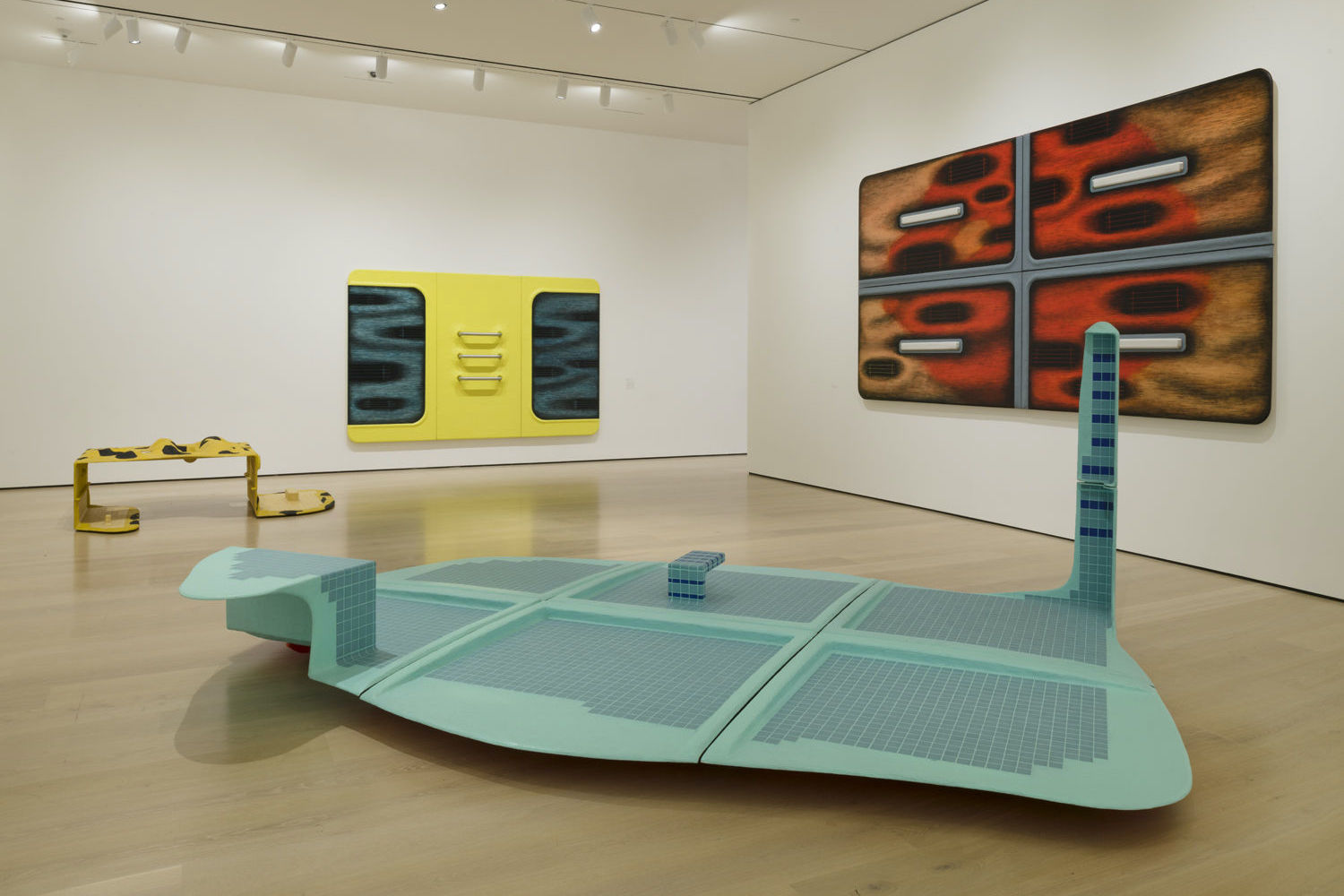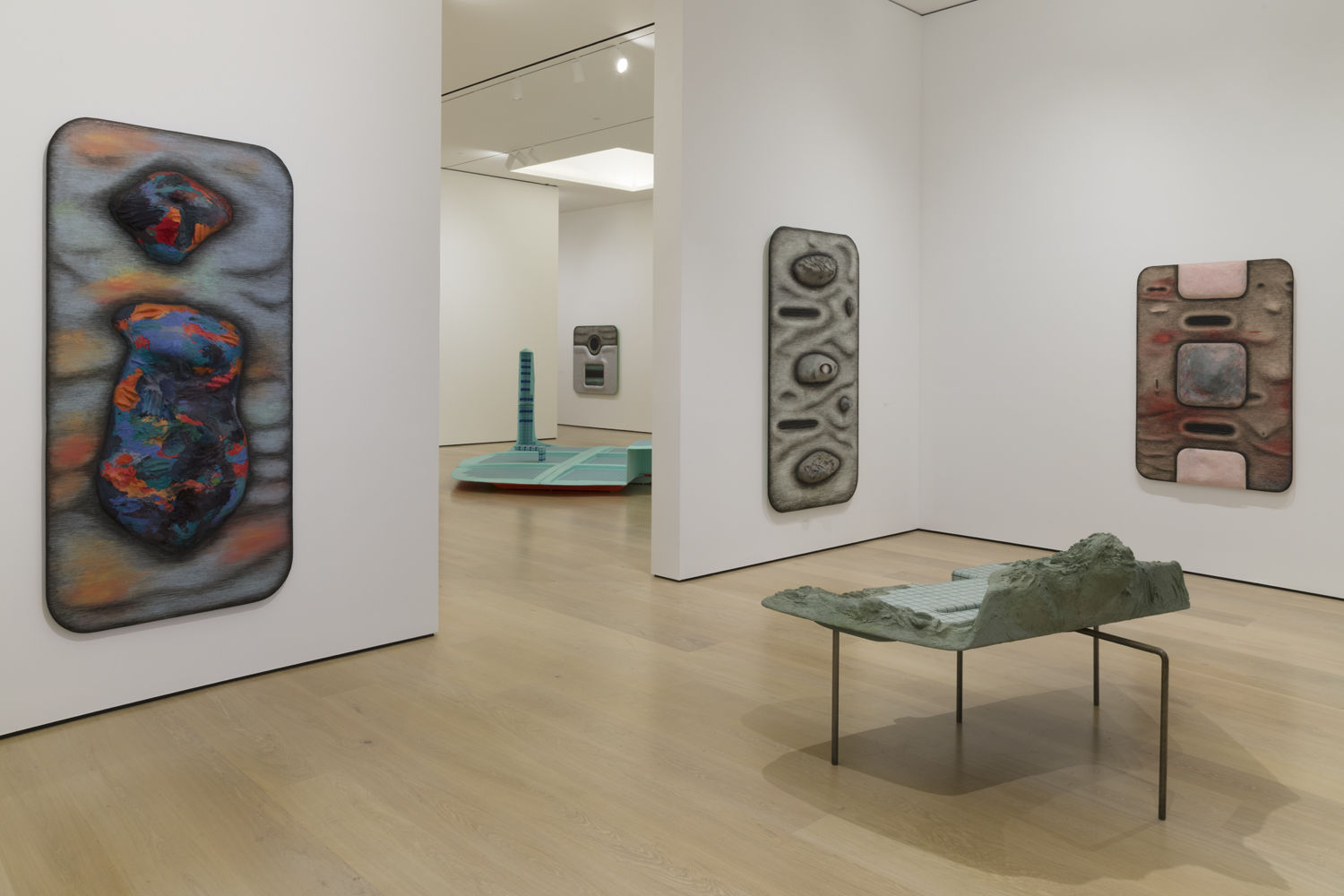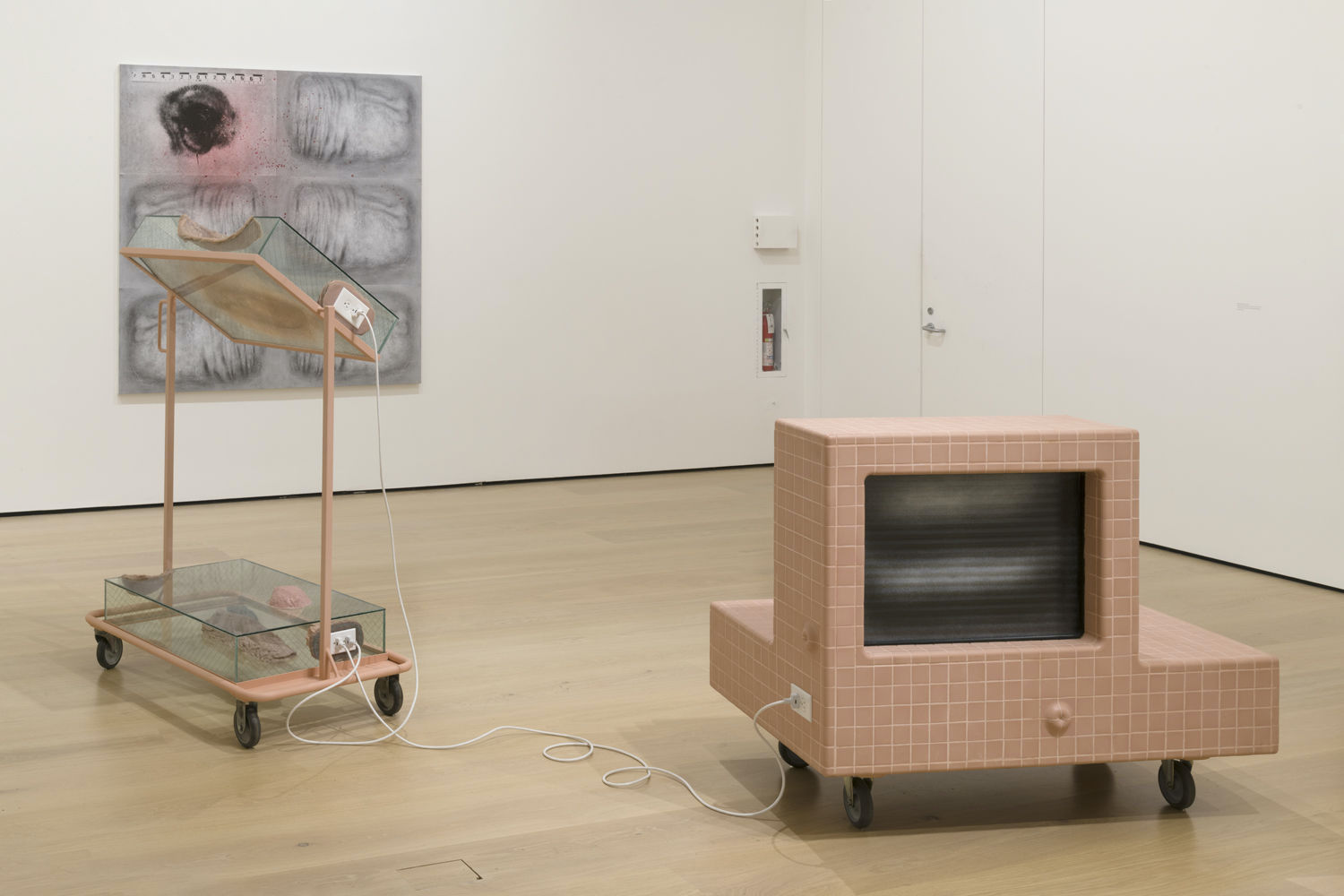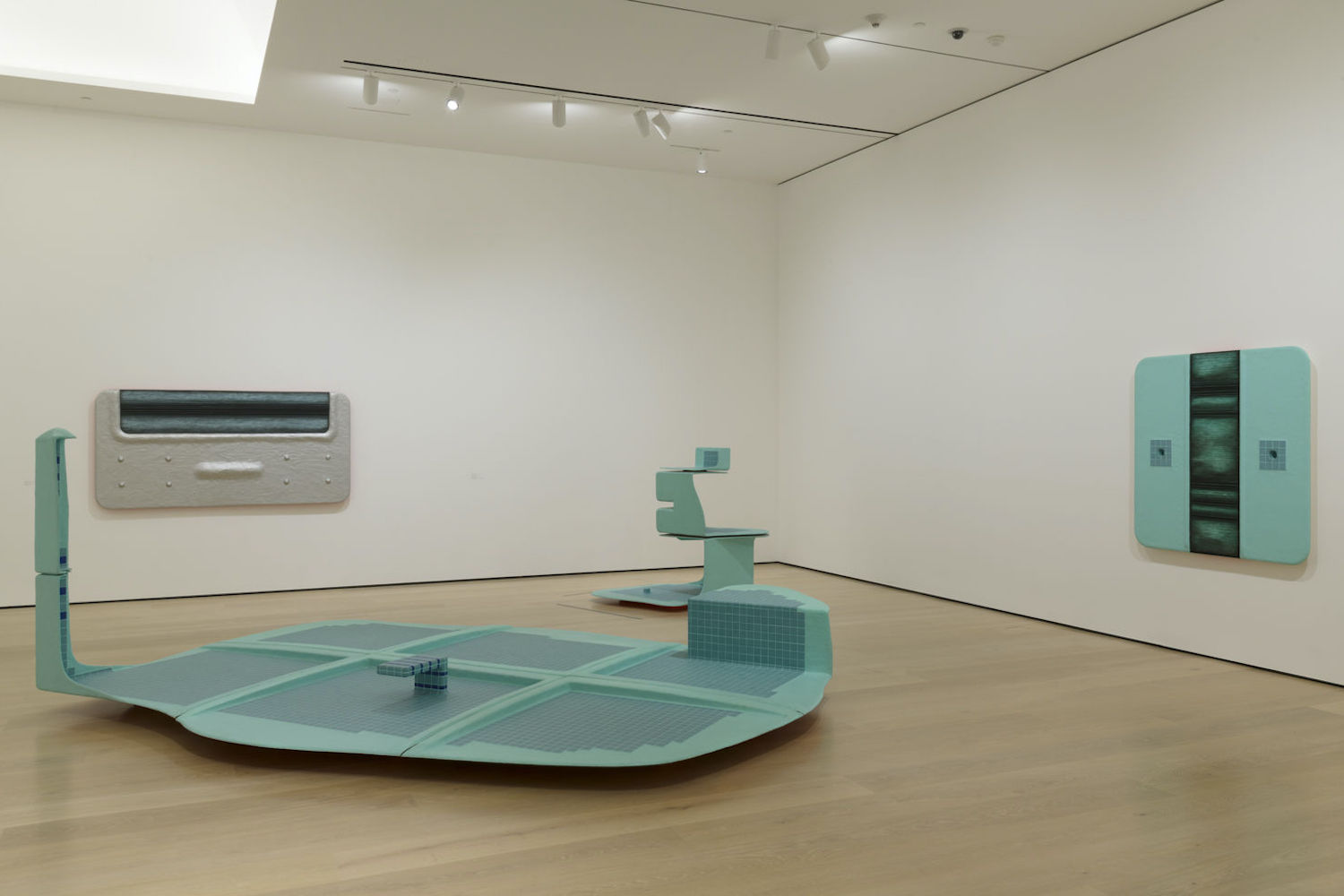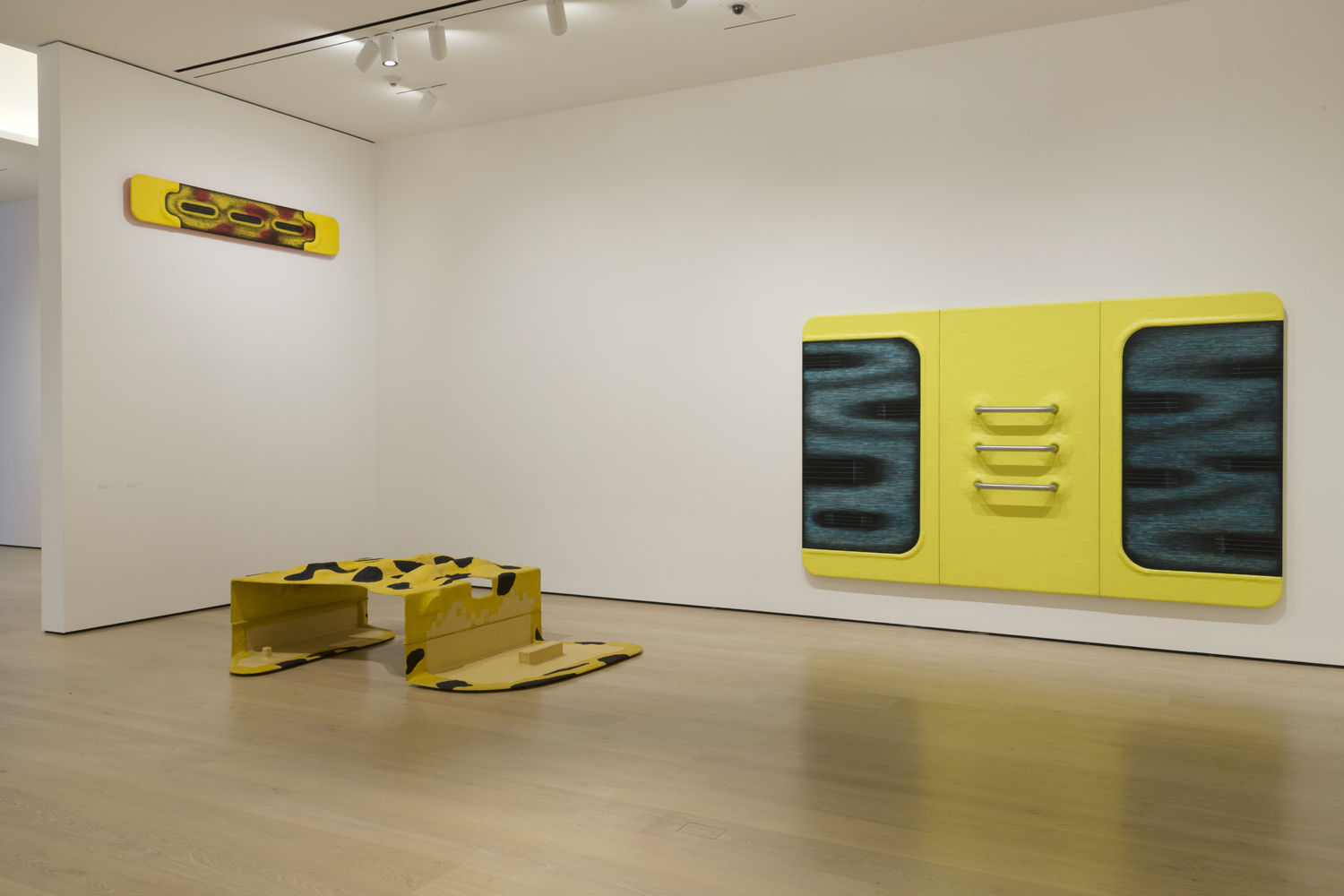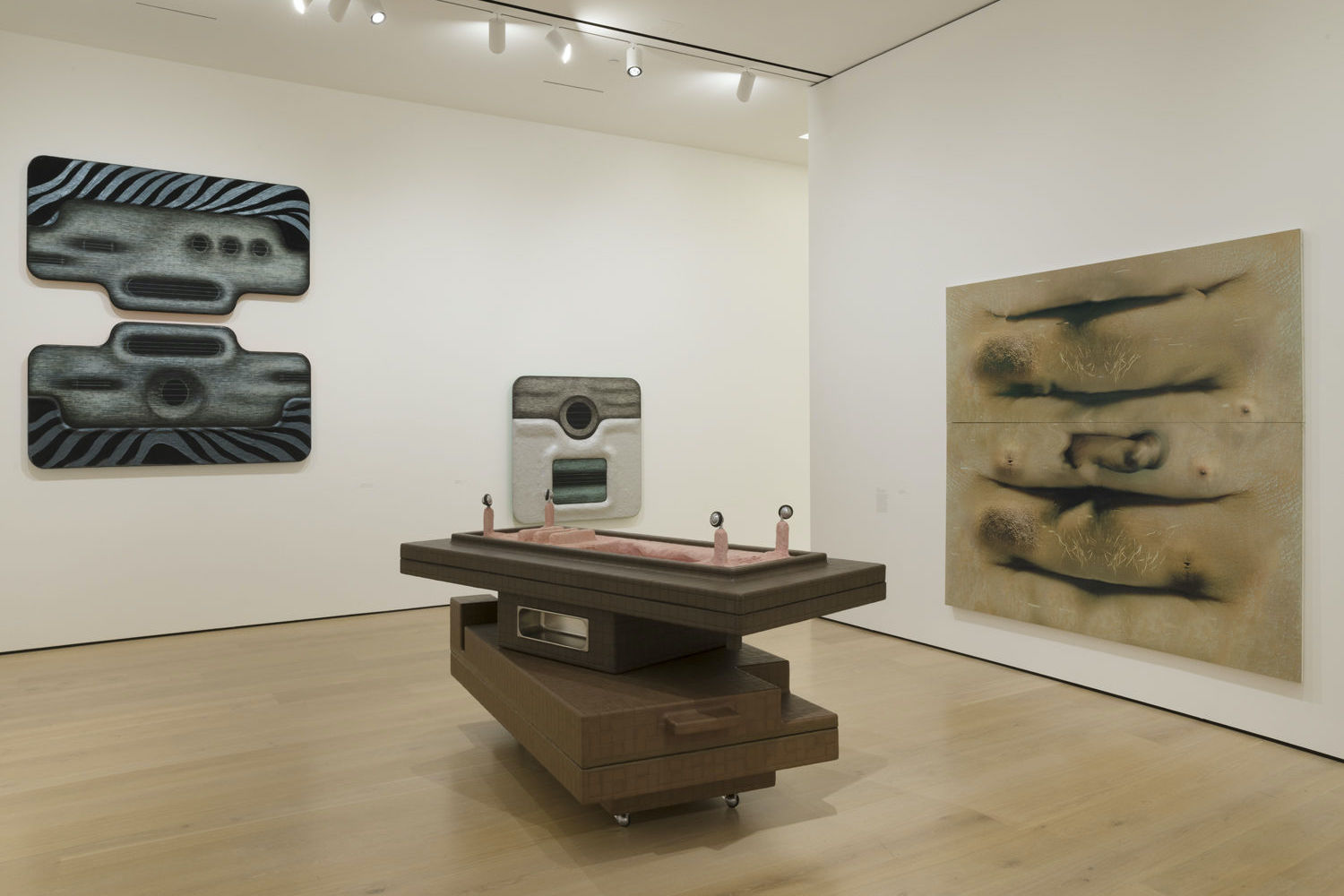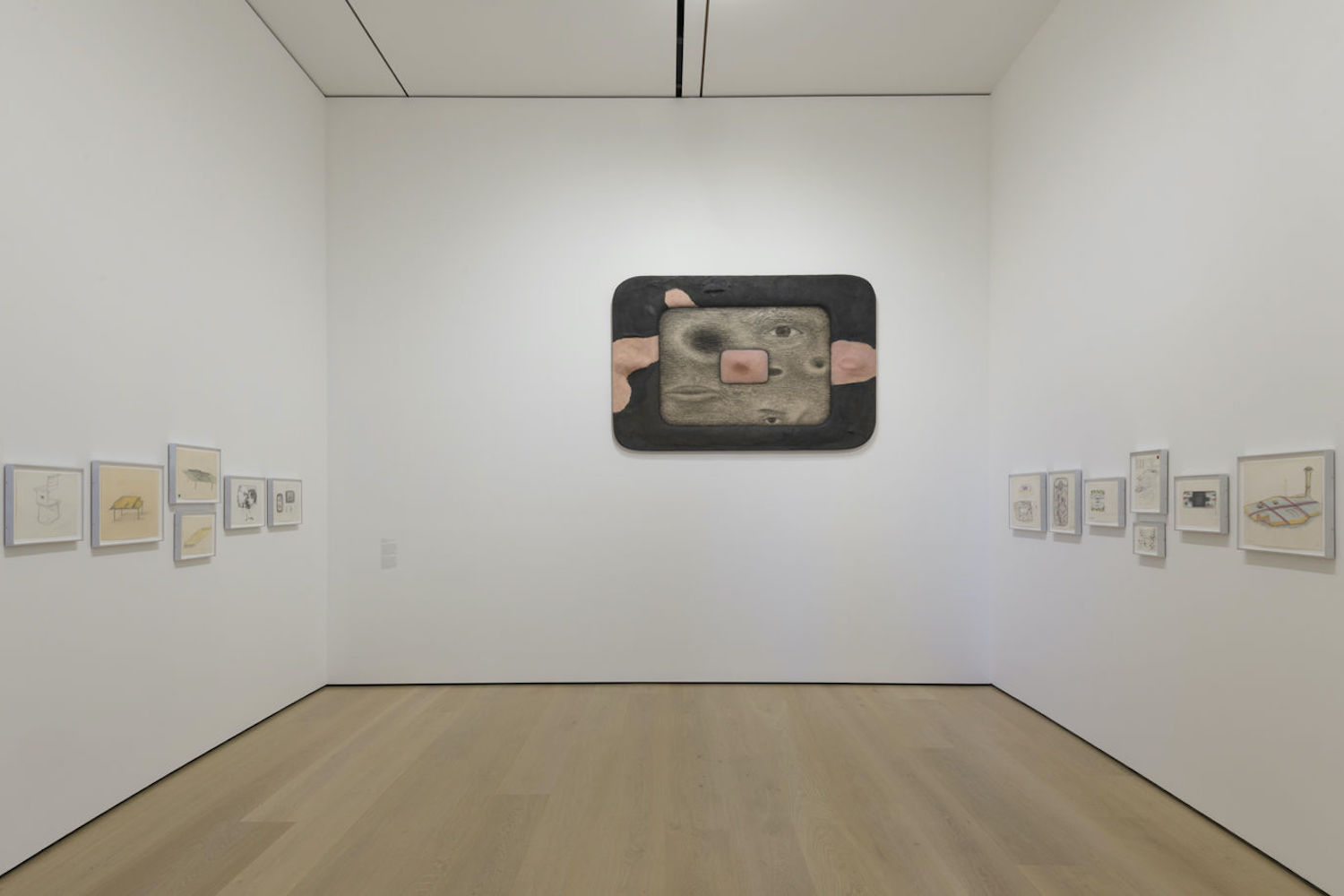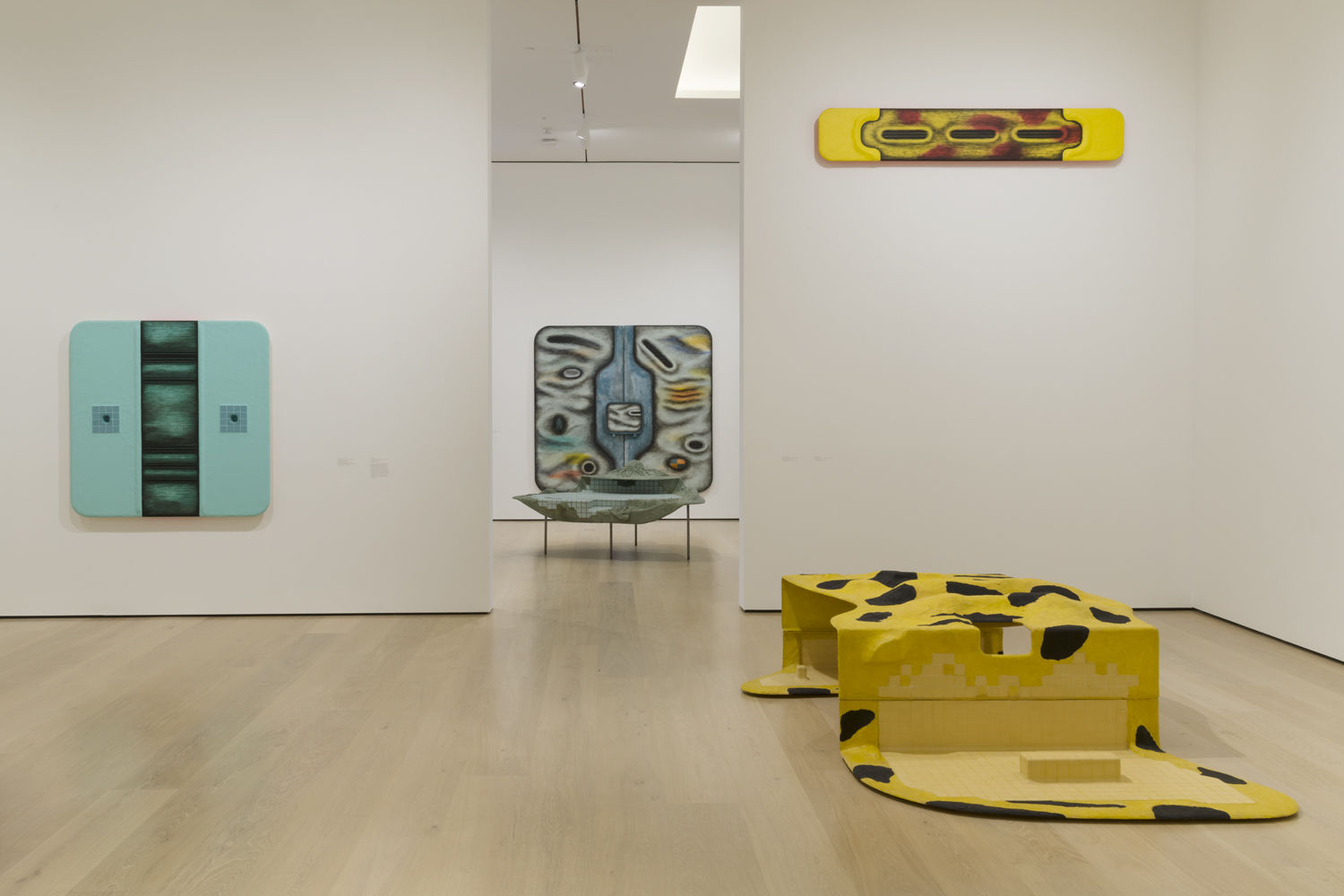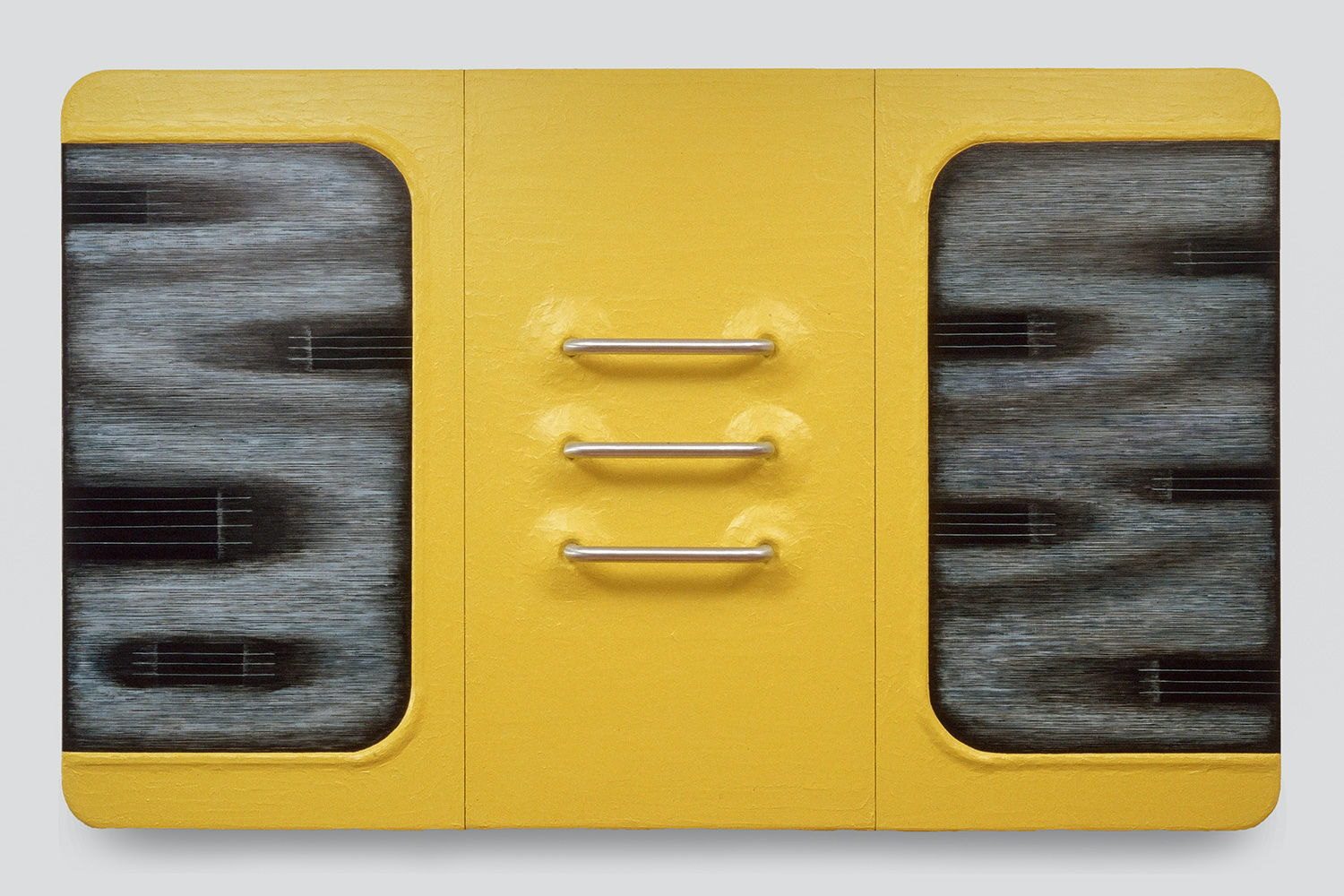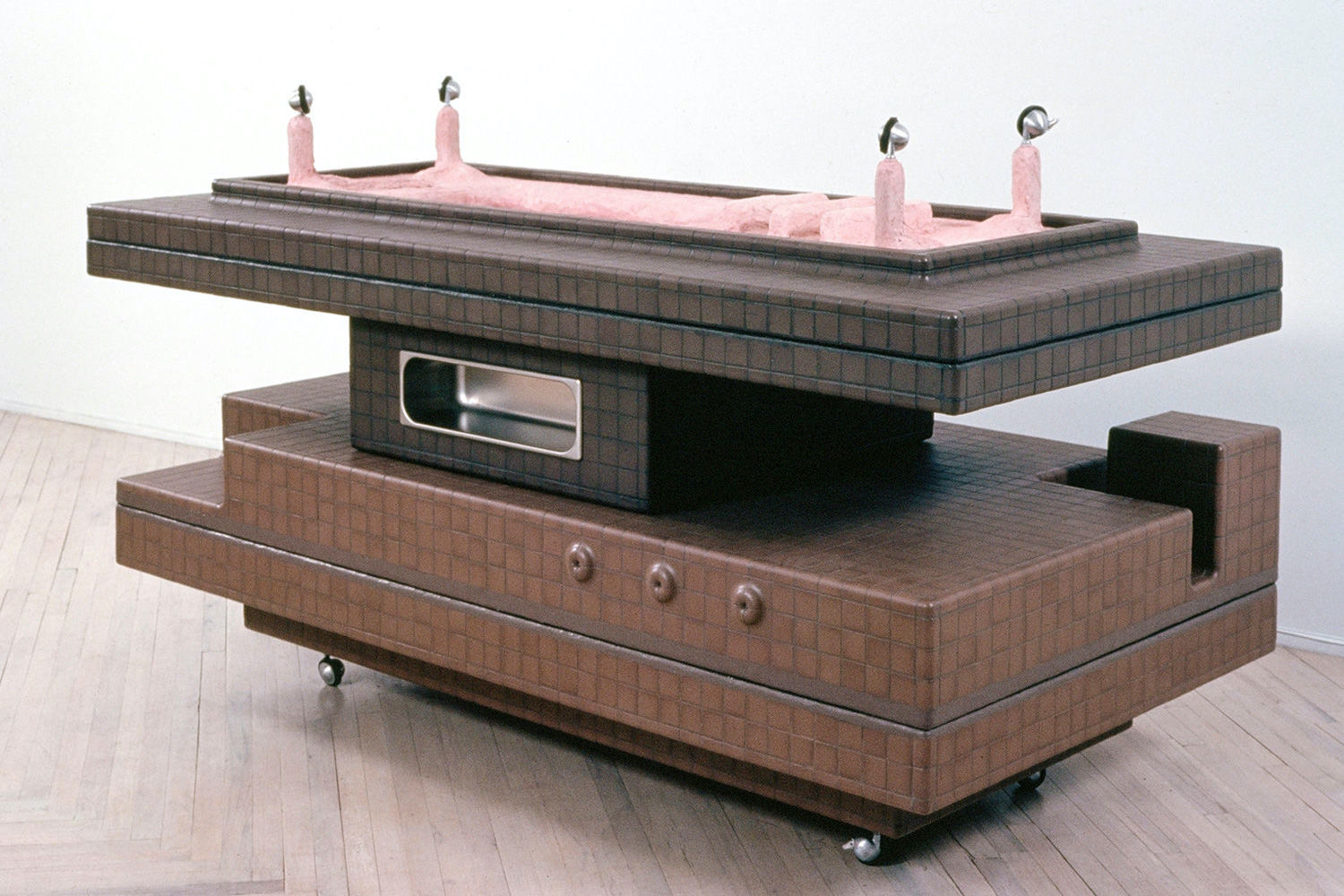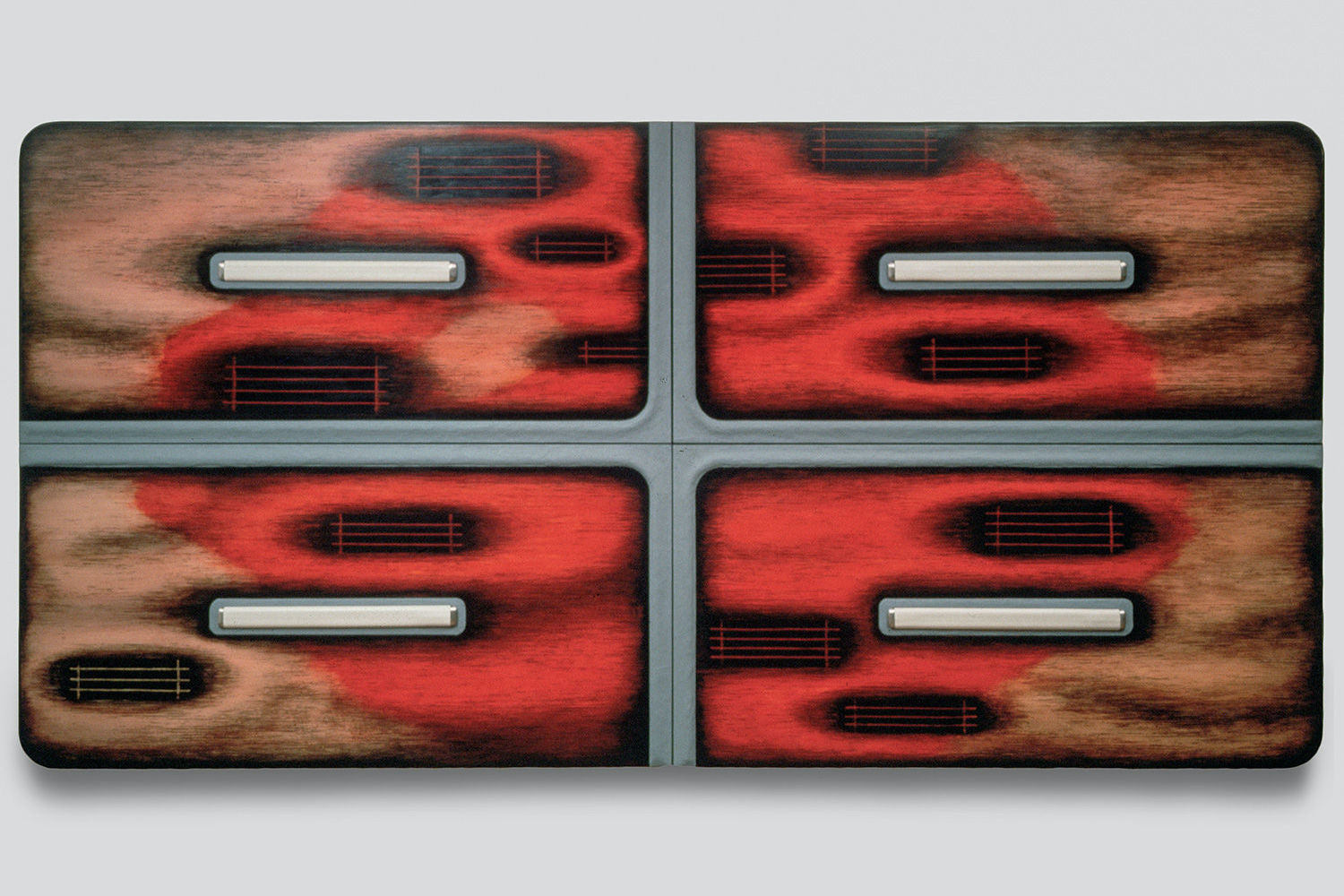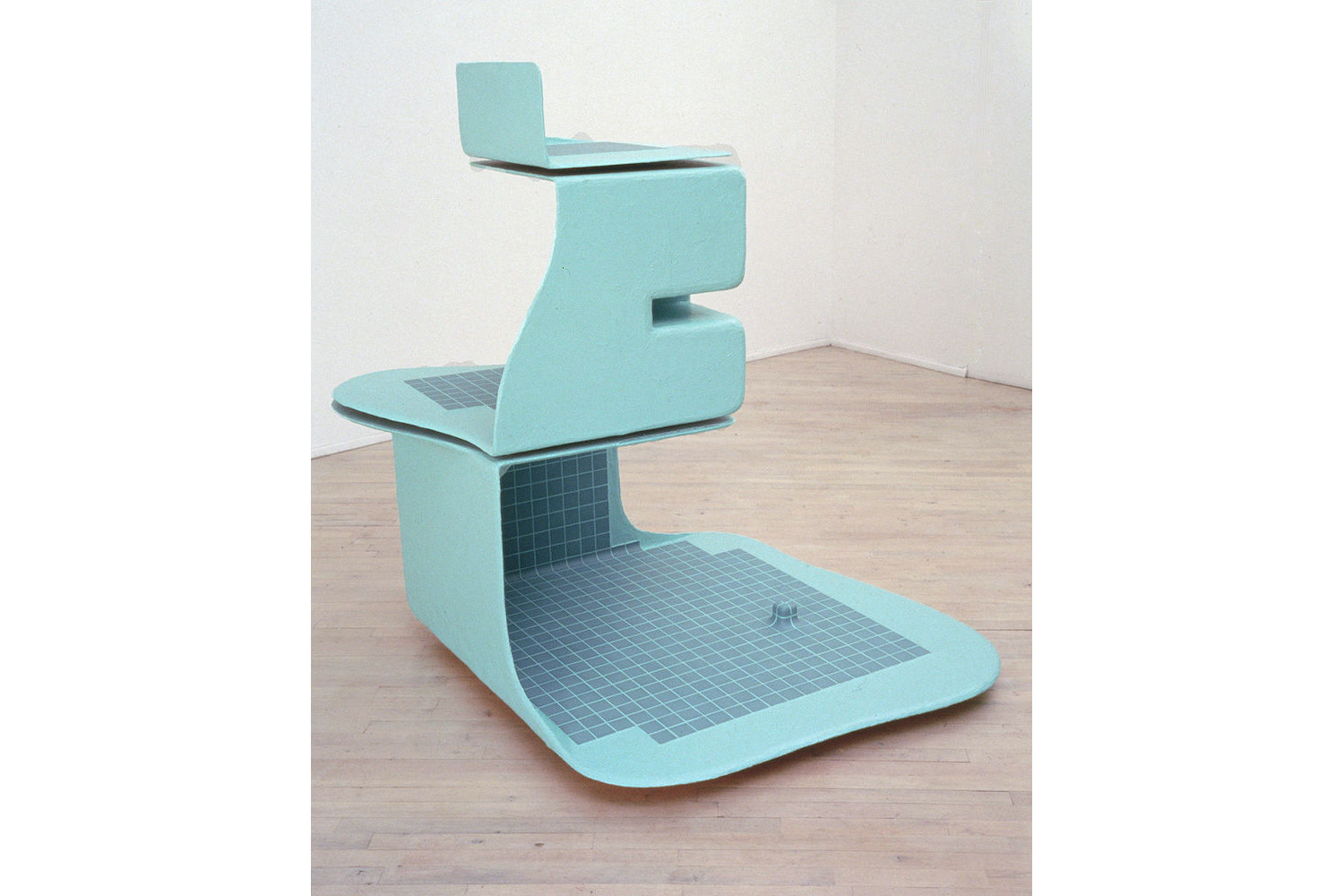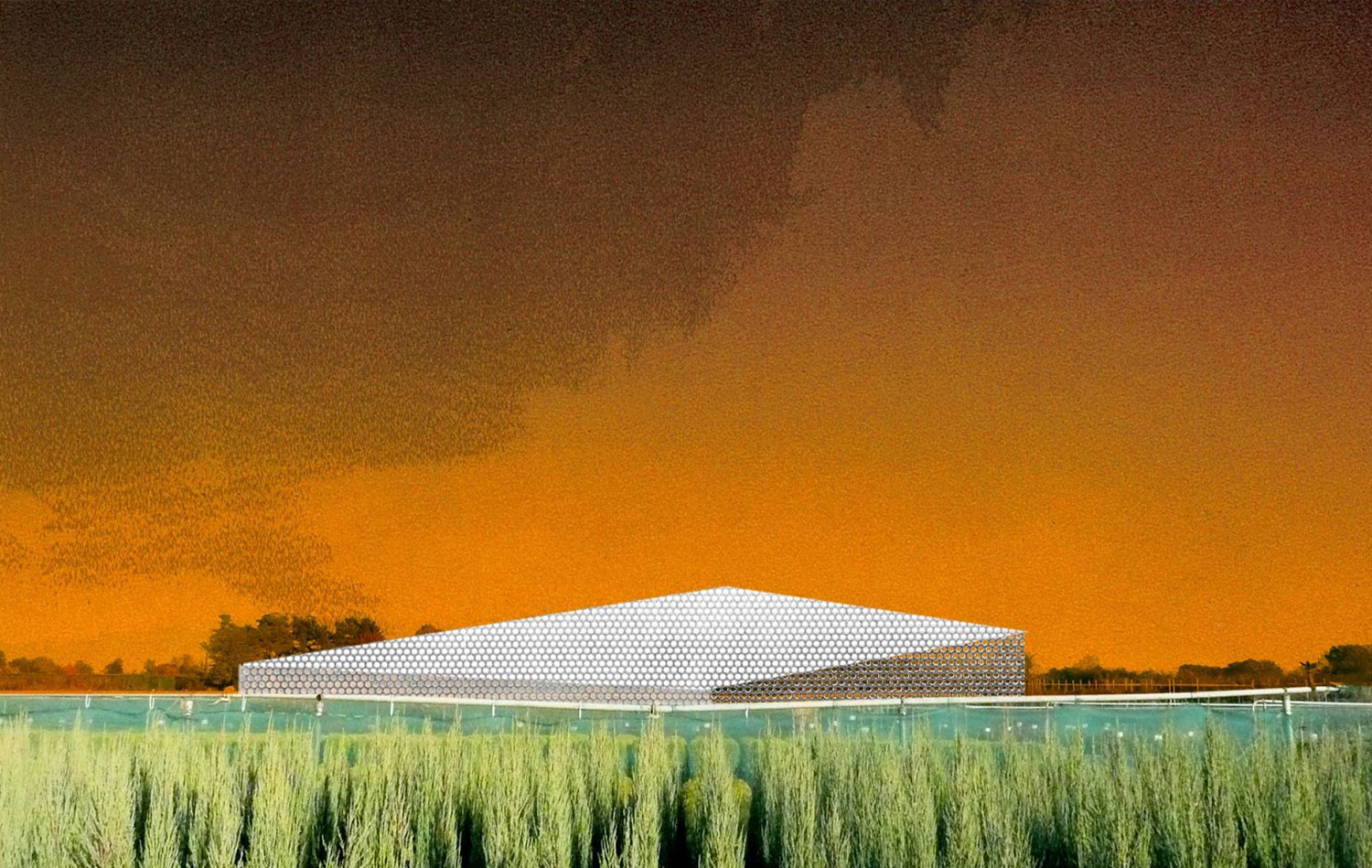The first museum survey of Tishan Hsu’s work to be mounted in the States, titled “Liquid Circuit,” traces the artist’s vatic and inventive practice as it archives and indexes the unfurling of an increasingly technological world emerging alongside it. From the beginning, Hsu was primarily concerned not with what technology could do to society, its possibilities and potential, but with what it was doing to us, how its affect and feeling were being metabolized by the soft register of the body. In mostly painting, sculpture, and drawing the exhibition presents Hsu’s confounding depictions of the circuitry of the body being manipulated and enmeshed with the musculature of machines.
Hsu began in the 1980s to make the paintings for which he would only much later begin to garner widespread attention. In a bid to break with the formal conventions of the visual art of the past, he began to build up thick layers of cement, Styrofoam, silicone, alkyd, resins, and urethane on sheets of cut plywood, eschewing the use of paint altogether in favor of the materials of industry. He also importantly decided to round the corners of his pictures. Unlike many of his peers at the time, Hsu, who worked in word processing to support himself as an artist, spent long hours bathed in the severe light of a screen, decades before their use would become unavoidable. Historically, paintings were understood as windows to an imagined and illusory world beyond; Hsu was interested in the way a screen was like a painting in that it mediated two realities profoundly in contention with each other, but unlike a painting in that it was a real object in itself. The works he produced enact this double articulation: the fundamental fissure between what we might call the software — the image — and the hardware — the boundary that supports and restrains it, making his paintings writhe with tension. In turn, their effect on us is less like what we have come to expect from visual art and is instead more like the sublime feeling we get from using a piece of technology that we can navigate almost thoughtlessly, but whose interior logic and mechanisms are far beyond our comprehension and hidden neatly out of sight. By this I mean to point out that the immediate familiarity of these works, their almost intuitively legible structure, is undergirded by a profound trembling unknown, an antithesis cloaked in enigma.
The hanging chimeras, with their revised, newly circular boundaries, resemble cells, the windows of an airplane, or the glimmering chips in credit cards — strange membranes haunted by the pulse of information, resource, and life itself that flows through them with an indifferent silence. Hsu’s paintings rest uneasily somewhere in the synapse between object and image. Or, put differently, they have transcended the mere casements that came before them and become, as much as they imitated, portals or thresholds. In 2007, Apple released the first iPhone. Responding to the same predicament that possessed Hsu decades earlier, of how to visually represent the experience of interfacing with a screen, they too rounded the corners of the machine that is now as ubiquitous as it was once, not too long ago, inconceivable. In effect, he had cribbed mass culture in reverse. In a promotional video produced by the Hammer for the exhibition, it is pointed out to Hsu that Closed Circuit II, a painting from 1986, looks eerily like the first iteration of the Instagram icon. An image of it is then shown to him on an iPhone X and he concurs that it is “bizarre.” Even the way Hsu’s paintings are hung, at a remove from the wall to give the impression that they are floating, which must have once seemed unaccountable and odd, is now instantly recognizable from the way windows hover above our computer’s depthless home screens, or apps drift over the stock images of the earth used, for no reason, as the backgrounds of iPhones.
It is often noted that the force of Hsu’s work is not easily captured or reproduced in photographs. Nowhere is this more true than in his sculptures, which undulate and recede like flayed flesh or waves braiding back into the ocean. In Autopsy (1988) or Vertical Ooze (1987), Hsu baits the figure. Like vacuum-formed Berninis, they seem to show the body maimed and mutilated under the heavy cleat of violence. Modernists, long before technology rendered their claims actionable, played with the distinction between life and death. Now, in a time when some promise a coming singularity in which consciousness could be relieved of its external proneness to the world, i.e., that useless thing we call the body, Hsu’s work appears to suggest that no matter how entangled we become with the contraptions that circumscribe us, it is our capacity to feel pain that will never allow us to leave behind our bodies entirely.

